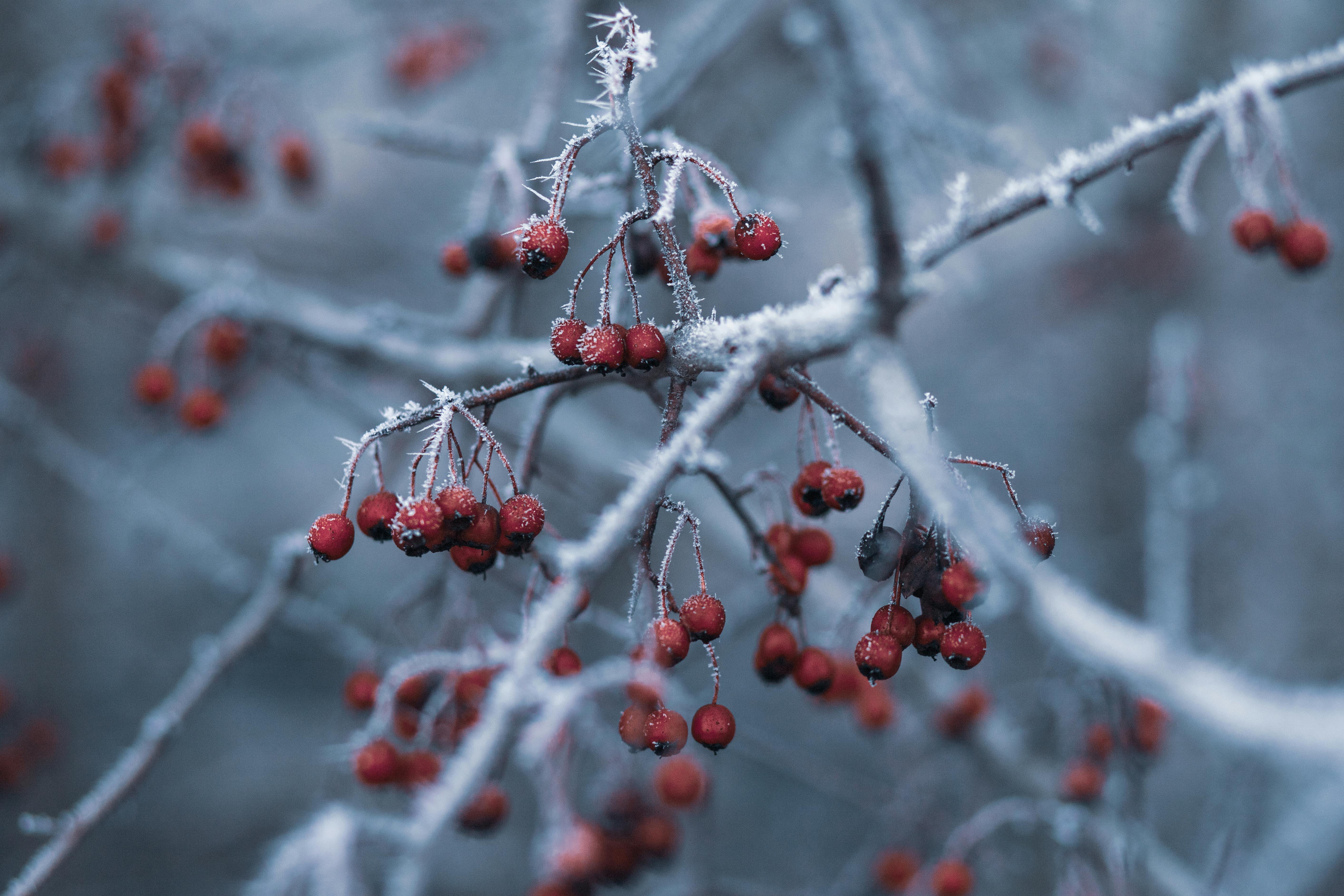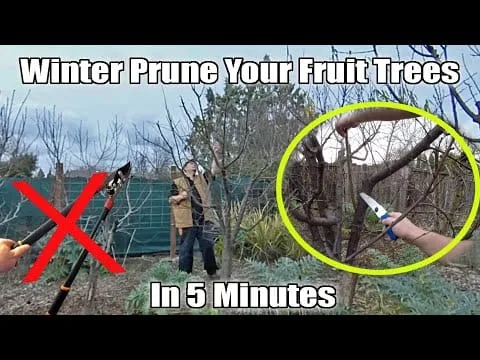Winter is the perfect time of year to trim fruit trees. Pruning in the winter helps to improve the health of your tree, as well as increasing the productivity and quality of your fruit harvest. By taking the time to properly trim your fruit trees in winter, you can help ensure a bountiful crop come summertime. In this article, we will cover all the steps you need to take to properly trim your fruit trees in winter.In preparation for winter pruning of fruit trees, it is important to first make sure all the necessary tools are ready and in good working order. Pruning shears, loppers, and a saw should all be sharpened and cleaned prior to pruning. Next, inspect the tree to identify any dead, diseased or damaged branches that need to be removed. Also, look for any crossing branches that could rub against each other when the wind blows. Lastly, take into consideration what type of growth you want to encourage in the tree and decide which branches will be removed and which will be left intact.
Identifying Which Branches to Prune
Pruning is an important part of tree care, as it helps keep trees healthy and safe. It’s important to know which branches should be pruned and how to properly prune them. To identify which branches should be pruned, look for any dead, diseased, or damaged branches that are in contact with other branches or have rubbing wounds. Also look for any branches that cross or rub against each other or against a structure such as a house or fence. In addition, look for any branches that interfere with power lines, sidewalks, and driveways. It is also important to consider the size of the branch before pruning; if the branch is too large it can damage the tree if not adequately trimmed.
When pruning trees, it is important to make sure that all cuts are made in the proper places in order to avoid wounding the tree. Make sure that all cuts are made at least one-fourth inch away from the branch collar—the swollen area at the base of a branch where it joins another branch or the main trunk of the tree. It is also important to avoid topping trees—cutting off too much of the top of a tree—as this can lead to diseased and weakened limbs and can even kill a tree if done excessively.
Tools Needed for Trimming Fruit Trees in Winter
Trimming fruit trees in winter is an important task, and having the right tools is essential to make sure the job is done correctly. Pruning shears are important for making precise cuts to branches. Long-handled loppers are helpful for thicker branches that need more leverage. Pole pruners can be used to reach higher branches that require more reach. A saw can be used for larger limbs and branches. It’s also important to have a ladder available so you can safely access higher branches. Safety glasses and gloves should also be worn when trimming fruit trees in winter.
Having hand cleaning supplies such as soap and water or wipes handy is also a good idea to keep your hands clean while working with plants and trees. Cleaning your tools regularly is essential for keeping them sharp and free of debris that can cause damage to delicate branches. Finally, make sure to have a bucket or bag nearby so you can collect the clippings as you work for easy disposal.
Trimming fruit trees in winter is an important task, but having the right tools will help make it easier and safer. With the right supplies, you can ensure your fruit trees stay healthy and continue producing delicious fruits!
Pruning Technique for Deciduous Fruit Trees
Pruning is an essential part of proper fruit tree care. It helps to maintain healthy trees, increase yields, and even shape a fruit tree for better structure. Pruning can be done at any time of the year but is usually done in late winter or early spring when the tree is dormant. When pruning deciduous fruit trees, there are a few general rules to follow.
The first step when pruning a deciduous fruit tree is to remove any dead or diseased branches. This will help to reduce the spread of disease and keep the tree healthy. Next, remove any broken or damaged branches as these can be weak and may not support heavy fruits. Once all dead or damaged branches are removed, it’s time to begin shaping the tree.
When shaping a deciduous fruit tree, prioritize the removal of any crossing branches first. These create weak points in the structure of the tree that can break under heavy loads of fruit or poor weather conditions. After crossing branches are removed, look for branches that are headed inward towards the center of the tree and prune them back as well. This will help promote better air circulation within the canopy which can reduce disease risk and improve fruiting conditions.
Finally, it’s important to thin out overly dense areas within the canopy by removing some of the smaller branches growing in close proximity to each other. This will allow more sunlight and air movement into these areas which will help promote healthier growth and fruiting potential for your deciduous fruit trees. Pruning should be done carefully and with consideration for future growth needs so that you don’t end up with an unbalanced looking tree later on down the line.
Pruning Technique for Evergreen Fruit Trees
Pruning is an essential part of maintaining the health of any fruit tree. Pruning an evergreen fruit tree can be tricky, however, due to its dense foliage and tendency to produce many fruits from a single branch. To ensure that your evergreen fruit tree produces a bountiful harvest of fresh, juicy fruits every year, it’s important to learn the proper pruning techniques.
When pruning an evergreen fruit tree, start by removing any dead or diseased branches first. This will help reduce the spread of disease and also encourage healthy growth in the tree. Next, thin out the canopy by removing any overcrowded or crossed branches. This will allow more sunlight and air circulation into the canopy and promote new growth in the tree. If necessary, you can also trim back some of the larger branches to reduce their size and improve their shape.
In addition to removing dead or diseased branches, you should also prune off any shoots that are growing in an undesirable direction or are too close together. You may also want to cut back any overly long branches so that they don’t weigh down the rest of the tree. Doing this will give your evergreen fruit tree a neat and tidy appearance while encouraging healthy growth throughout its canopy.
Finally, it’s important to fertilize your evergreen fruit trees at least once a year with a balanced fertilizer containing nitrogen, phosphorus, and potassium. This will help keep your trees healthy and provide them with essential nutrients for producing large amounts of sweet, delicious fruits each year. By following these simple pruning tips, you can ensure that your evergreen fruit trees remain healthy and continue producing delicious fruits for years to come!

Common Mistakes to Avoid When Pruning Fruit Trees in Winter
Pruning fruit trees in winter is an important task for ensuring the health of your trees and a healthy harvest the following season. However, there are some common mistakes that can be made when pruning fruit trees in winter. It is important to be aware of these mistakes so you can avoid them when pruning your fruit trees. Here are some of the most common mistakes to avoid when pruning fruit trees in winter:
1. Pruning too early or too late: Pruning fruit trees at the wrong time can cause damage to branches and leaves, leading to lesser yields. The best time to prune fruit trees is late fall or early winter, just before dormancy sets in. If you wait until later in the winter, the tree may already be dormant and you won’t be able to achieve good results.
2. Not using sharp tools: Using dull tools makes it difficult to make clean cuts and can cause damage to the tree’s bark or tissue underneath it. Make sure your tools are sharp before you begin pruning so that you’re able to make precise cuts and avoid any unnecessary damage.
3. Removing too much wood: Over-pruning can lead to excessive sap loss as well as weakening of branches which can lead to breakage or splitting during storms or high winds. It’s best practice not to remove more than 1/3 of a tree’s total woody growth during a single pruning session.
4. Not removing deadwood: Deadwood should always be removed during a pruning session as it will interfere with new growth and sap flow, impeding healthy growth of your tree. Make sure you remove any deadwood before starting your pruning session.
5. Not sterilizing tools between cuts: This is one of the most important steps when it comes to avoiding disease transmission from one tree to another while pruning for multiple species at once. Make sure you sterilize your blades between each cut so that diseases don’t spread from one tree to another.
By following these tips and avoiding these common mistakes, you will help ensure healthy growth for your fruit trees and a successful harvest next season!
The Benefits of Pruning Fruit Trees in Winter
Pruning fruit trees in winter is a great way to ensure optimal health and productivity in the upcoming growing season. Pruning is essential for the health of the tree, as it helps to promote better air circulation, encourages strong growth and prevents disease. It also helps to shape the tree and ensure that there will be an abundance of fruit at harvest time. Winter is a good time for pruning fruit trees because it allows the tree to heal before the start of the growing season.
One of the main benefits of pruning fruit trees during winter is that it helps to eliminate dead or diseased branches. These branches are often difficult to spot during other times of year, so pruning them out during winter helps to prevent diseases from spreading through the tree. This can help save both time and money in the long run by eliminating potential problems before they become an issue. Pruning also helps to reduce overcrowding in a tree, which can inhibit air circulation and cause overcrowded branches to become weakened or die off.
In addition to removing dead or diseased branches, pruning fruit trees in winter also helps promote strong growth throughout the next season. Pruning encourages new growth on existing branches by removing competing buds or shoots that may be competing for resources with other parts of the tree. This can help create a more even canopy across all parts of the tree, allowing more light and air circulation throughout its entire structure.
Finally, pruning fruit trees in winter helps improve yields at harvest time by selectively removing certain branches and shoots that are not producing as much as desired or are not necessary for overall health. This can be especially helpful when trying to manage disease pressure or when attempting to increase production from specific areas on a tree. While it may take some practice and patience, proper pruning techniques can help maximize yields while still keeping a healthy balance across all parts of a tree.
Overall, there are many benefits that come with properly pruning fruit trees in wintertime. Not only does it help reduce potential diseases and overcrowding within a tree’s structure, but it also promotes healthy growth through selective removal of certain shoots or branches while improving yields at harvest time. With some practice, any gardener can learn how to correctly prune their trees for maximum benefit throughout each growing season!
Removing Diseased and Dead Branches from the Tree
Removing diseased and dead branches from a tree is an important part of keeping your tree healthy and looking its best. Diseased branches can spread disease to other parts of the tree, while dead branches can cause injury to people or property if they fall. It is important to remove these branches properly in order to prevent further damage or injury.
The first step in removing diseased or dead branches from a tree is to inspect the tree for any signs of disease or damage. This can be done by looking for discoloration, unusual leaf patterns, or any other signs of distress. Once you have identified any diseased or dead branches, you will want to cut them away from the rest of the tree. Cutting away the affected branch should be done carefully with a sharp saw or pruning shears, making sure not to damage any other parts of the tree in the process.
Once the branch has been removed, it is important to properly dispose of it in order to prevent further spread of disease or infection. Dead branches should be burned, buried, or taken away for disposal. Diseased branches should be taken away for proper disposal as well, as they may contain harmful organisms that can spread infection throughout your garden or landscape.
Removing diseased and dead branches from a tree can help keep it healthy and looking its best. This important task should be done regularly in order to avoid potential dangers caused by falling limbs and spreading diseases throughout your garden. Properly disposing of these branches will help keep your landscape beautiful and safe for everyone to enjoy!

Conclusion
Winter is the best time to trim fruit trees as it will encourage healthy growth and better yields. Pruning should focus on removing dead or diseased branches, reducing overcrowding, and removing any suckers. It is important to use the right tools for pruning and to make clean cuts when removing branches. In addition, it is important to keep the tree symmetrical by cutting back all sides evenly. With proper pruning techniques, your fruit trees will be healthier and more productive in the upcoming years.
Trimming fruit trees in winter can be a bit daunting at first, but with the right knowledge and tools, it can be a rewarding endeavor. With patience and practice, you can become an expert on how to trim fruit trees in winter and reap the benefits of having healthy and productive fruit trees for many years to come.



